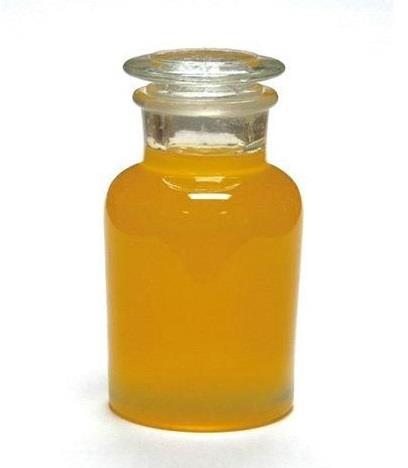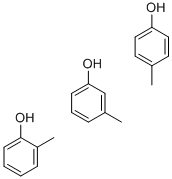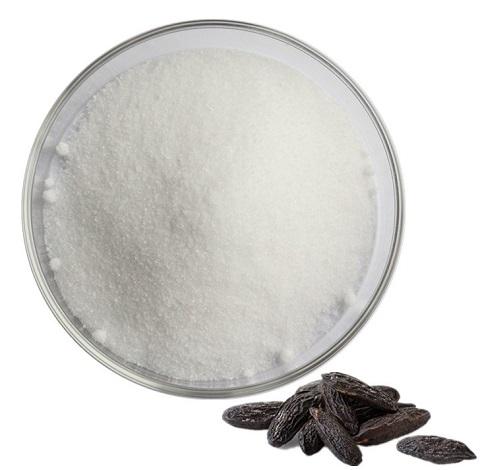?Environmental Fate of Cresol
Professions that involve dealing with the combustion of coal or wood may be exposed to higher levels of cresols than the general population. Environmental tobacco smoke is also a source of cresol exposure. Average cresol concentration may vary between the brand and type of cigarette in a 45-cubic meter chamber after six cigarettes had been smoked (ranged from 0.17 to 3.9 mg m3), although low levels of cresol can be detected in certain foods and tap water, and these do not constitute major sources of exposure for most population. Detectable levels of cresols have been reported in several consumer products including tealeaves, tomatoes, and ketchup as well as butter, oil, and various cheeses. Exposure to children occurs by the same routes that affect adults. Children are likely to be exposed to cresols through inhalation of contaminated air from automobile exhaust, waste incineration, and secondhand smoke.

Property
Cresols (mixtures of the ortho-, meta-, and para-isomers) are synthesized by sulfonation or oxidation of toluene compounds or can be derived from coal tar and petroleum. Commercial grade crude cresol is generally a mixture of 20% o-cresol, 40% m-cresol, and 30% p-cresol. Phenol and xylenols are often found as minor contaminants. Manufacture of synthetic resins, tricresyl phosphate, salicylaldehyde, coumarin, and herbicides employ cresols. Degreasing compounds in textile scouring, paintbrush cleaners as well as fumigants in photographic developers, and explosives contains cresols. Cresols are also often used as antiseptics, disinfectants, and antiparasitic agents in veterinary medicine. Estimated breakdown of cresol and cresylic acid use is 20% phenolic resins, 20% wire enamel solvents, 10% agricultural chemicals, 5% phosphate esters, 5% disinfectants and cleaning compounds, 5% ore flotation, and 25% miscellaneous purposes. Overall, use of cresols as antimicrobial outweighs any other property.
Environmental Fate
Cresol’s production and use as a solvent, disinfectant, and chemical intermediate in the production of synthetic resins may result in its release to the environment through various waste streams. Cresols are also released to the environment through automobile exhaust and tobacco smoke. Cresols are a group of widely distributed natural compounds formed as metabolites of microbial activity and excreted in the urine of mammals. Cresols occur in various plant lipid and oil constituents. If released to air, an extrapolated vapor pressure range of 0.11–0.299 mm Hg at 25°C for the various isomers indicates cresols will exist solely as a vapor in the ambient atmosphere. Vapor-phase cresols will be degraded in the atmosphere by photochemical reaction and produce hydroxyl radicals. The half-life for this reaction in air is estimated to be 6–9 h.
If released to soil, cresols are expected to have high mobility based upon Koc values of 22–49 measured in soil. Volatilization from moist soil surfaces is expected to occur slowly based upon Henry’s Law constants. Cresols are not expected to volatilize from dry soil surfaces based upon the extrapolated vapor pressure range. Cresols biodegrade quickly in soils with half-lives of few days. If released into water, cresols do not adsorb to suspended solids and sediment in the water. Cresols biodegrade quickly in water with half-lives of severaldays to few weeks.
Volatilization from water surfaces is expected to occur slowly based upon the range of Henry’s Law constants for the various isomers. Estimated volatilization halflives for a model river and model lake range from 21 to 29 and 235–327 days, respectively. Cresols are not expected to undergo hydrolysis since they lack functional groups that hydrolyze under environmental conditions. Direct photolysis in sunlit surface occurs and products occur at a much slower rate than biodegradation. Log bioconcentration factor values of 1.3 and 1.03 measured in ide and zebrafish respectively suggests that the potential for bioconcentration in aquatic organisms is low.
It acts by disruption of the cell membrane by denaturation of proteins and enzymes of the cell.
);You may like
Lastest Price from Cresol manufacturers

US $1.10/g2021-07-22
- CAS:
- 1319-77-3
- Min. Order:
- 1g
- Purity:
- 99.9%
- Supply Ability:
- 100 Tons min

US $15.00-10.00/KG2021-07-10
- CAS:
- 1319-77-3
- Min. Order:
- 1KG
- Purity:
- 99%+ HPLC
- Supply Ability:
- Monthly supply of 1 ton


